There are 1,000's of different perennials in nature, but it's a relatively few number that have been adopted for use in gardens. Ornamental grasses are mainstream now, but only a few decades ago they were a group of plants relegated to the interest of botanists, not garden designers.
This new design trend blended the unique merits of ornamental grasses with the natural forms of seedheads and mass planting, moving away from the Gertrude Jekyll style of the flowering perennial border, in vogue for most of the 20th century.
This new design movement changed the way we design our gardens today - all revolving around the unique design power of ornamental grasses.
Evelyn
In the 1980's there was a new wave in garden design, focused on textural plants and mass planting, for a more natural looking garden. Inspired by the more subtle beauty of nature, it’s the non flower merits that this design movement was about – seedheads, colourful bark, the tans and golds of foliage and flower plumes, mass plantings more like what is found in nature, to create gardens that had a bold presence in all seasons. Emphasis was much more on a plant's form and texture, rather than flower colour. This was going on hand-in-hand with the increasing desire among gardeners for their landscapes to be less maintenance with less water needs.
This "new wave" of garden design started in Europe with just a handful of innovative garden designers and hit north American gardens shortly after. The name of this new garden design style was coined "New Wave Naturalism". Ornamental grasses and sturdy, relatively common plants, were an integral part of these designs. A trademark of this new style was how plants looked in fall and winter as being just as important as their summer flowers. ...plants chosen and laid out in a way that didn't rely on high maintenance deadheading and other management, and that were suitable for the soil and site conditions to negate the need for supplementary water.
The first plant breeder to recognize the garden merits of ornamental grasses and who's work inspired these desginers, was the German nurseryman and plant breeder, Karl Foerster. Foerster developed a hybrid of Calamagrostis acutiflora that was named after him - Calamagrostis x acutiflora 'Karl Foerster'. It has become ubiquitous in gardens all over the northern hemisphere by now, due to it's ... unique contribution to a garden's design ... it's sterile flowers that prevent the usual problem of seeding itself and becoming a nuisance ... and it's extreme hardiness and ease of growing in average garden conditions. Foerster's inspired the New Wave Naturalism design movement with his foresight to see that we needed something truly new in our gardens. It was only a matter of time before this new plant group was embraced by designers ready and waiting for something truly new.
When I first started collecting different ornamental grasses in the '90's, outside of this newcomer, Calamgrostis 'Karl Foerster', there were few others commercially available. That changed quickly though as the New Wave look caught on and designers demanded better ornamental grasses availability. The first few plants that hit the market were disasters though - many of them with runner roots that took over gardens, and other's that collapsed into a tangled mess of leaves by late summer. On my garden consultation travels during this time, I can't tell you how often I encountered horribly ruined gardens, overrun with the aggressive roots of Lyme grass (Leymus arenarius) or Ribbon grass (Phalaris arundinacea) for example. These early entries to the marketplace charmed everyone with their bold
 coloured leaves while still
in pots at the garden centers in spring, but in the garden they were
a disaster and many people turned away from trying any of the other
really wonderful new grasses coming to market quickly. (C.
'Karl foerster' looked so boring in a pot by comparison, that
most passed it over!). Grasses were so
new to gardeners, the assumption was that all of them behaved in a
similarly unruly fashion. It took a while for
gardeners to be convinced that other grasses were safe to use ...
and the rest is history. Today, there are
dozens of new cultivars of each of the main ornamental grass
species available and you'd be hard pressed to find a garden
designer that doesn't integrate them into their planting
design.
coloured leaves while still
in pots at the garden centers in spring, but in the garden they were
a disaster and many people turned away from trying any of the other
really wonderful new grasses coming to market quickly. (C.
'Karl foerster' looked so boring in a pot by comparison, that
most passed it over!). Grasses were so
new to gardeners, the assumption was that all of them behaved in a
similarly unruly fashion. It took a while for
gardeners to be convinced that other grasses were safe to use ...
and the rest is history. Today, there are
dozens of new cultivars of each of the main ornamental grass
species available and you'd be hard pressed to find a garden
designer that doesn't integrate them into their planting
design. Innovators of the New Wave Naturalism Garden Design Movement in the late 20th century.
Ornamental grasses are pretty much the only major group of plants that are relatively new to the horticulture industry. The New Wave Naturalism style was launched in the 80’s by the famous American design team of Wolfgang
 Oehme & James van Sweden in the US and the
Dutch designer Piet Oudolf in Europe, working together with
plant breeders the likes of Karl Foerster.
Oehme & James van Sweden in the US and the
Dutch designer Piet Oudolf in Europe, working together with
plant breeders the likes of Karl Foerster. Karl Foerster. This German nurseryman's foresight was the original inspiration for this new design movement, with the introduction of an important new hybrid of two species of Calamagrostis acutiflora native to Europe and Asia. He apparently discovered the species in the 1930s along a railway in Germany and the story goes that he pulled the emergency brake on the train he was riding in order to collect the plant he saw out the window. The resulting cultivar ‘Karl Foerster’ was named to honor him. (link to more about him).
Piet Oudolf.
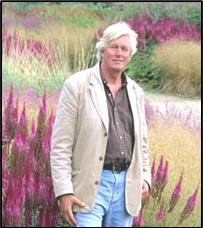 Using large sweeps of
contrasting texture and subtle colours, using grasses and texturally
interesting flowers and seedheads, Oudolf’s designs celebrate fall
and winter interest as at least 50% of a garden's potential
beauty. Winter gardens full of dreamy billows and frost kissed
flower stalks and seedheads are his trademark.
Using large sweeps of
contrasting texture and subtle colours, using grasses and texturally
interesting flowers and seedheads, Oudolf’s designs celebrate fall
and winter interest as at least 50% of a garden's potential
beauty. Winter gardens full of dreamy billows and frost kissed
flower stalks and seedheads are his trademark.Wolfgand Oehme & James Van Sweden took this concept further in the direction of even larger mass plantings based on a small plant pallet to create dramatic landscapes. Their own take
 on this new wave of garden design was inspired
by the North American prairie lands and was called "The New American
Garden Style". In their book Gardening With Nature, they pay
homage to the plant breeder Karl Foerster who's inspiration this new
style was built on.
on this new wave of garden design was inspired
by the North American prairie lands and was called "The New American
Garden Style". In their book Gardening With Nature, they pay
homage to the plant breeder Karl Foerster who's inspiration this new
style was built on. Another innovator, Adrien Bloom of the world famous Blooms of Bressingham nurseries
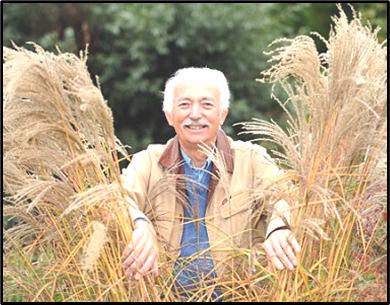 in the UK, uses grasses in a
more traditional way, within richly mixed perennial and shrub
gardens, which is the way most of us want to use grasses - combining
the best of the previous Jekel-esk style and integrating some of the
plants and textural features of the New Wave
style. His gardens as a rule use single specimen
grasses as opposed to the “New Wave” innovators who launched the
trend of sweeps of mass plantings.
in the UK, uses grasses in a
more traditional way, within richly mixed perennial and shrub
gardens, which is the way most of us want to use grasses - combining
the best of the previous Jekel-esk style and integrating some of the
plants and textural features of the New Wave
style. His gardens as a rule use single specimen
grasses as opposed to the “New Wave” innovators who launched the
trend of sweeps of mass plantings. Try some of these wonderful plants! We see the giants out there, like the Miscanthus sinensis cultivars, but there are many only just 2 - 3 feet tall that would fit nicely among your flowering perennials in even the smallest garden.
Cheers! Evelyn
©Evelyn Wolf, 2019. All rights reserved. Contact for permission to use.

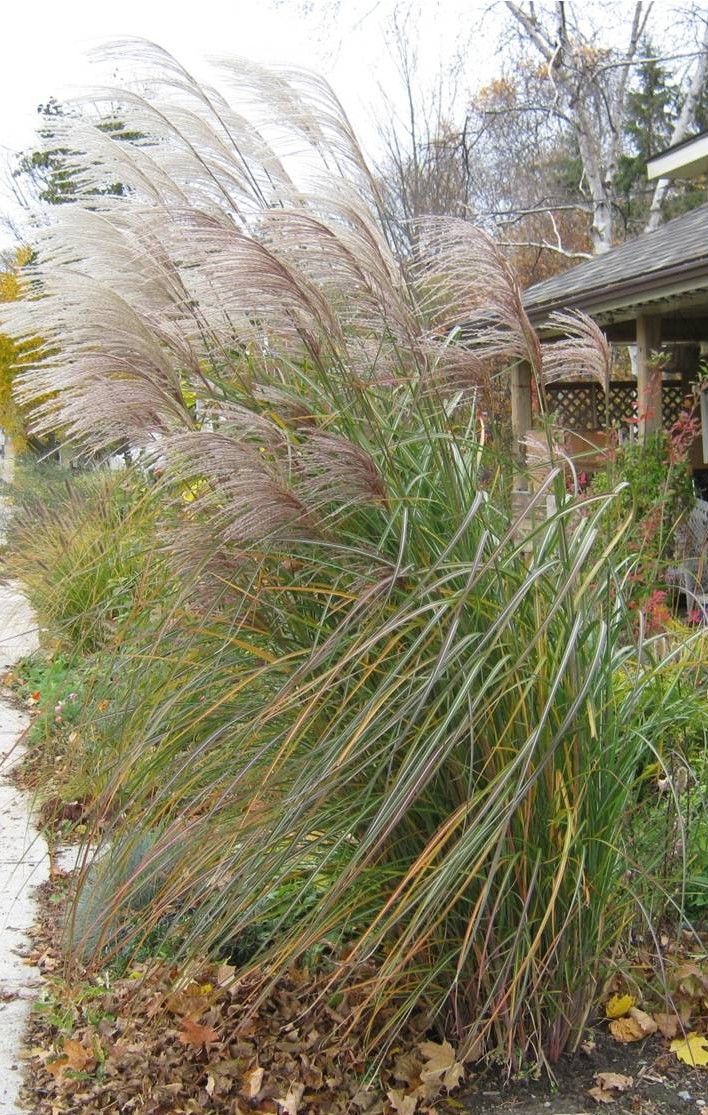
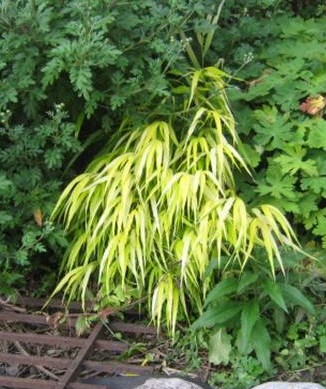 exceptions to this though—Imperata,
Hachonechloa, Carex mainly. These are among the few
ornamental grasses hardy to our zone that are moisture lovers,
native to wetlands. Most of the
others—Miscanthus, Calamagrostis, Pennisetum—are native to the
open prairies of the world and are tough drought tolerant plants.
exceptions to this though—Imperata,
Hachonechloa, Carex mainly. These are among the few
ornamental grasses hardy to our zone that are moisture lovers,
native to wetlands. Most of the
others—Miscanthus, Calamagrostis, Pennisetum—are native to the
open prairies of the world and are tough drought tolerant plants.
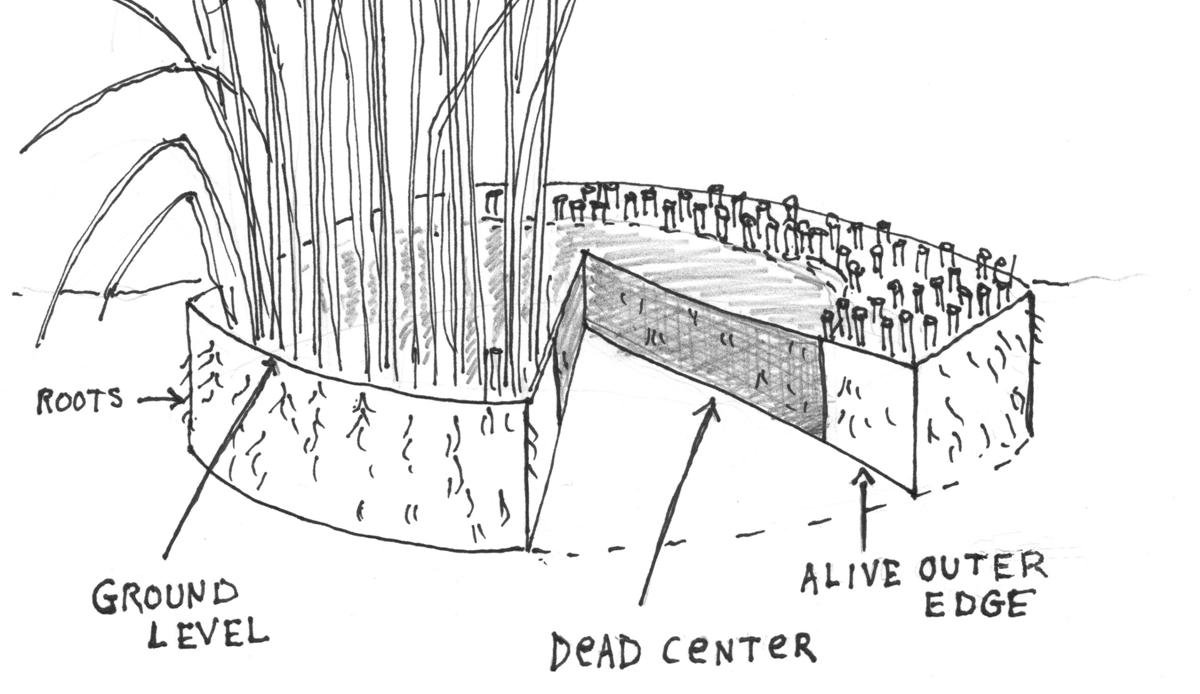 out clumps in pie shaped sections,
one at a time, with a strong shovel, sturdy enough to not
bend as you lever the roots out of the ground.
out clumps in pie shaped sections,
one at a time, with a strong shovel, sturdy enough to not
bend as you lever the roots out of the ground.